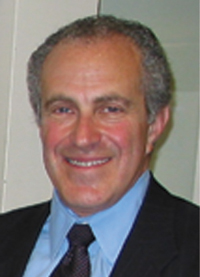Cracks Begin to Show in the GOP Fortress
By Michael S. Lubell, APS Director of Public Affairs
 Michael S. Lubell |
Vernon J. Ehlers, the first professional physicist to serve in Congress, made unexpected news during the Republican retreat held in Philadelphia at the end of January. A fellow of the American Physical Society, Ehlers, who is in his sixth term in the House, serves the 3rd District in Michigan, which tilts strongly Republican
Although Ehlers is a staunch environmentalist, the Republican House leadership generally considers him very much a team player. During the 107th Congress, according to the 2003 Almanac of Politics, he supported his party's leadership on most key votes, including tax cuts, campaign finance reform, faith-based charities, trade authority and the commitment of troops to Iraq.
So it came as a bit of a surprise when he challenged President Bush's political advisor, Karl Rove, over the White House economic message. According to CQ Weekly (February 14, 2004), the exchange went something like this.
Rove told his captive audience of Republican office holders that they needed to make sure their constituents got the word that the economy was recovering. Ehlers, who is not casually demonstrative, responded by holding up a copy of the Grand Rapids Press with the front page headline, "10 Days, 4,600 Jobs Lost."
According to CQ, Ehlers asked Rove, "What are we supposed to tell our constituents about that?" Rove had no compelling response, and as Ehlers noted afterward, "Nobody does." And that, any wise politico will tell you, poses a problem for office holders seeking another term.
As the President's approval ratings slip below 50% and national polls show Democratic presidential contender John Kerry ahead of the President among likely voters, GOP House and Senate members are beginning to wonder whether George W. Bush is going to be an asset or a liability in the 2004 election. That uncertainty could play a major role in the dynamics of the second session of the 108th Congress.
In fact, some might argue, the shift in the landscape is already evident. Here are two examples.
Shortly before the State of the Union Address, President Bush, amid great fanfare, unveiled his new vision for space: establishing a permanent base on the Moon and then sending astronauts off to Mars.
To say that Congress was unimpressed is an understatement. With the nation facing a budget deficit of $521 billion exclusive of any supplemental spending on Iraq, which won't be requested until after the November election—the exact amount cannot possibly be estimated until then—the bipartisan response from the Hill was a not so muted "Oof!"
The President had clearly laid a political egg. But he's savvy and recognized the error immediately. The grandiose plan never made it into his State of the Union speech. And it might even have been eliminated from his budget request, but, since the books were already being printed, we'll never know. The latest word is that Congress is likely to strip a good deal of the NASA money away from the project.
The congressional response to the presidential budget request offers a second example. The House GOP leadership, which has pretty much walked in lockstep with the Bush White House, has recoiled at the idea that the nation is on course to spend about $600 billion (including the presumed defense supplemental) that we don't have, and has put the Administration on notice that it plans to trim back the President's request, even for the Department of Defense.
Senate GOP leaders have proposed a different tack: their plan is to have no budget at all, until after the election. The technical way to achieve this is to pass a "Continuing Resolution." Senate insiders have suggested that a CR might extend for all of FY 2005, keeping spending frozen at FY 2004 levels.
Where does this leave science? In the case of the Department of Energy, a yearlong CR would protect the Office of Science from the 2% cut requested by the White House, although it might not permit any new project starts.
In the case of the National Science Foundation, a CR would strike the 2.2% increases for the various directorates. And for National Institutes of Standards and Technology, a CR would prevent Congress from ameliorating the pain created by the FY 2004 budget, which cut deeply into the NIST laboratories.
Whatever the outcome, it won't be pretty. Nor will it please most voters. But the choices are scant. So even if you're a novice at politics, this might be your year to run for office.
©1995 - 2024, AMERICAN PHYSICAL SOCIETY
APS encourages the redistribution of the materials included in this newspaper provided that attribution to the source is noted and the materials are not truncated or changed.
Associate Editor: Jennifer Ouellette
April 2004 (Volume 13, Number 4)
Articles in this Issue

